Last-Minute NYC Holiday Gift Guide 🎁
We’ve created a holiday gift guide with presents for the intrepid New Yorker that should arrive just in time—


Once a bustling commerce site and entry point for immigrants, Brooklyn Bridge Park has since transformed into one of New York City’s most visited tourists attractions, boasting six piers and a wide array of recreational facilities. Today, visitors and locals alike revel in the panoramic views of the iconic skyline while strolling along the park’s famous promenade. It’s easy to be distracted by such a sight since Brooklyn Bridge Park does offer the perfect backdrop for photographs. However, it also holds a rich and fascinating history that’s worth exploring.
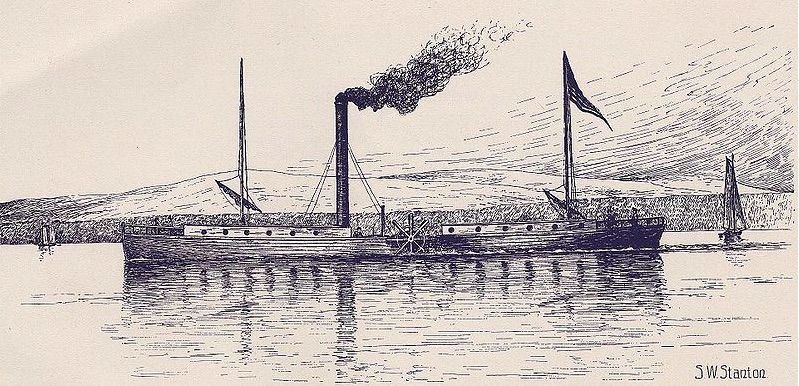
The Clermont making its first voyage up the Hudson River. Image from Wikimedia Commons.
In 1814, the company of Robert Fulton, the inventor of the world’s first commercially successfully steamboat, established an effective ferry system to help cross the East River. With its launch, workers began to move Brooklyn, where they relied on the ferry to commute to their jobs in Manhattan. This eventually helped to transform the area into one of the world’s first “commuter suburbs,” and the third-largest city in America.
By 1853, the Union Ferry Company of Brooklyn, the successor to Fulton’s business, had established dozens of lines across the East River. The ferry system continued to grow at a rapid pace until the early 20th century, when advances in technology and transportation caused its eventual decline. Walt Whitman commemorated the beauty of crossing by ferry in the poem, “Crossing Brooklyn Ferry,” and Fulton Ferry Landing in Brooklyn Bridge Park marks the historic site with an art installation inspired by the poem.
Today, Brooklyn Bridge Park is what it is partly due to the fact that modern planners predicted that waterfront access in the form of a vibrant public park would contribute to population growth in the borough, just as it had in the mid-1850s. Ferries are also making a comeback with the arrival of the East River Ferry in 2011 and the planned launch of the Five Borough Ferry system in 2018.
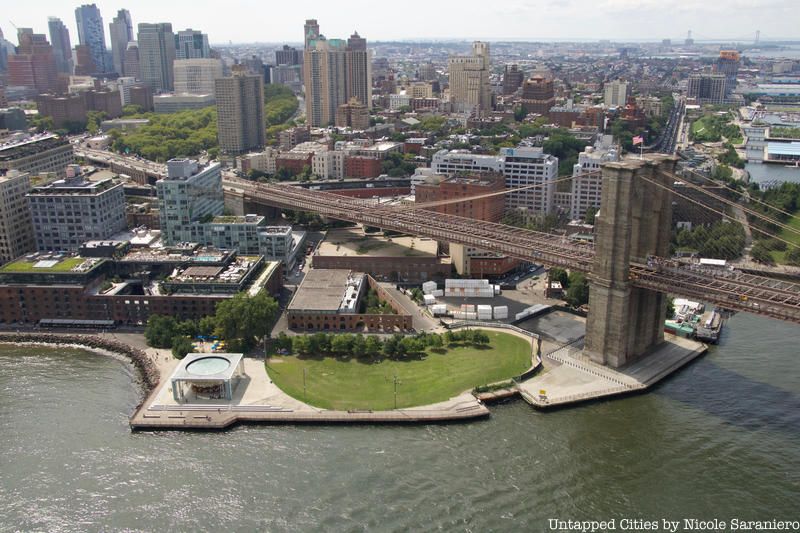
Brooklyn Bridge Park was built with sustainability in mind and many of its features incorporate salvaged or repurposed materials from all around New York City. The Granite Prospect, a set of steps along the western edge of the pier, was constructed out of 300 pieces of granite taken from the reconstructed Roosevelt Island Bridge. The seating area at Pier I salt marsh and portions of the Empire Fulton Ferry landscape utilize 3,200 cubic yards of granite taken from the demolished Willis Avenue Bridge.
When the MTA began construction on its East Side Access Project in 2001 – to connect the Long Island Rail Road’s (LIRR) Main and Port Washington Lines to a new LIRR terminal beneath Grand Central Terminal in Manhattan – Brooklyn Bridge Park acquired “clean bulk fill” from the tunneling procedures, which was later placed under manufactured soil to create portions of the landscape in the park.
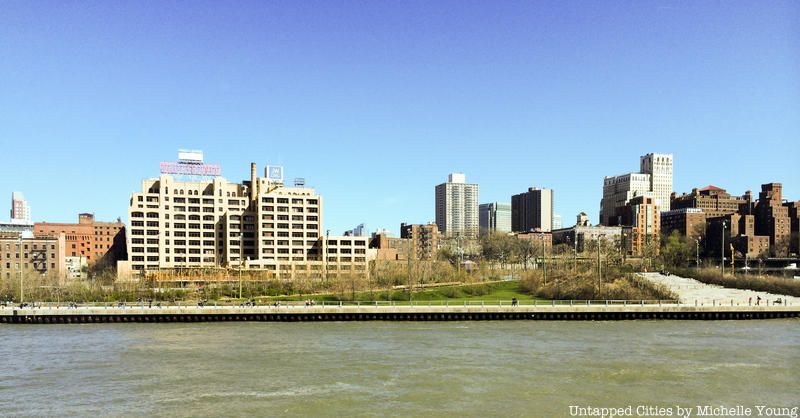
During the early construction phase of Brooklyn Bridge Park, a team of archaeologists was brought in to survey the area. After looking through historical records, including maps and photographs, the team was able to locate a site around Pier 1 that held the remains of the Jewell Milling Company at the intersection of Old Fulton and Furman Streets. The mill, which ground grain into flour and livestock feed, was co-founded by Theodore Jewell in 1855. Along with its remains, archaeologists also uncovered remnants of warehouses and paving stones from the 19th century ferry terminal. To this day, the foundations of the mill are still underground.
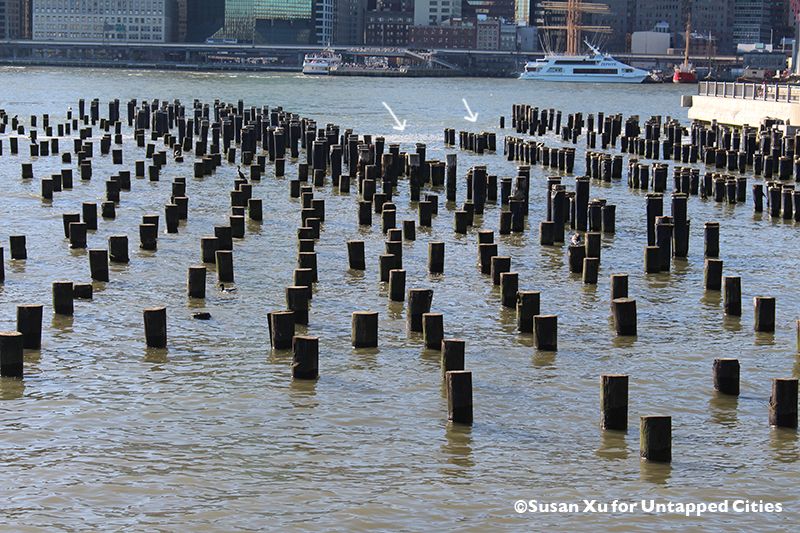
Throughout Brooklyn Bridge Park, wooden pilings can be found in the water. Gaps between the sections indicate where train tracks are located. The A and C trains run directly underneath the two open sections seen in the picture above, by Pier 1. According to amNY, under Pier 2, you can see two openings that mark where the 2 and 3 trains run.
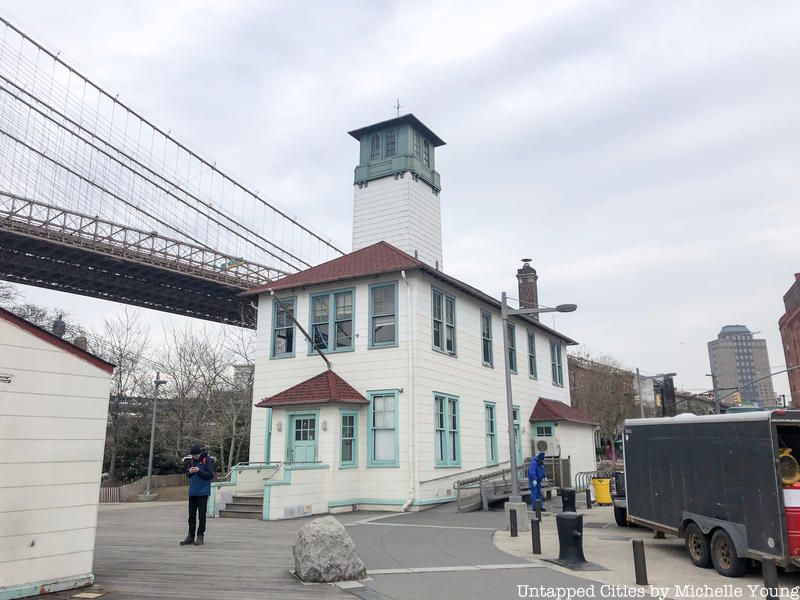
The threat of fire was a constant concern along the waterfront, which was home to warehouses and ships filled with highly combustible goods. Between 1822 and 1952, at least 26 fires swept across what is now the Brooklyn Bridge Park. To prevent or contain the fires, Brooklyn relied on a combination of land and sea forces, such as Engine Company 24 on Furman Street, which operated Brooklyn’s largest fire engine. The Fire Department of New York took over after 1898, when Brooklyn officially became a borough. Today, the Brooklyn Ice Cream Factory is housed inside the former Marine Fire Boat Station, which opened in 1926.
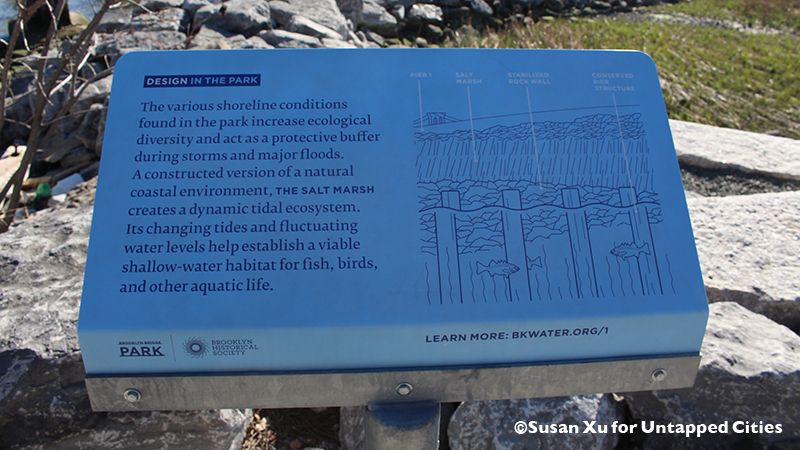
Brooklyn Bridge Park is known for its rich biodiversity, which can be attributed to the inclusion of native plant habitats in the waterfront site. To suit the aquatic environment, which includes salt marshes and wetlands, the plants were specifically selected for their salt and wind tolerance. All the green space is also managed organically to ensure the environment stays healthy. Underneath Pier 1’s Freshwater Gardens, for instance, a series of stormwater storage tanks collect rainwater that is used to irrigate the land. It is considered one of the most unique garden beds in Brooklyn.
Moreover, Brooklyn Bridge Park was designed with wildlife viability in mind. Ecological features, like the soft edges of the shoreline, protect the landscape during storms while the uneven surface of the rip rap ensures that the park’s salt marshes are shielded from aggressive wave action. The resulting habitat is ideal for waterfowl, crustaceans and other species that live in the area.
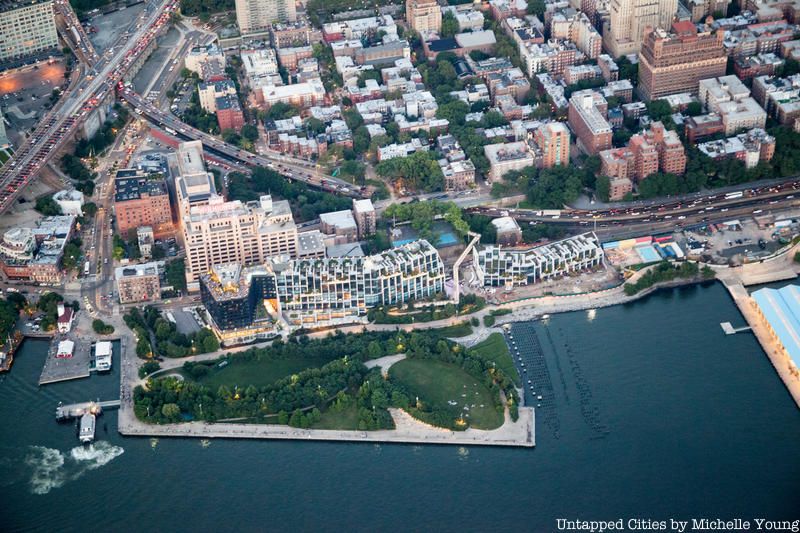
In order to address the problem of noise generated by Brooklyn Queens Expressway (BQE), the park has 20- to 30-foot high hills in the uplands between Piers 2-5. The unique topography helps to reduce noise levels from 75 decibels (equivalent to standing beside a lawnmower) to 68 decibels.
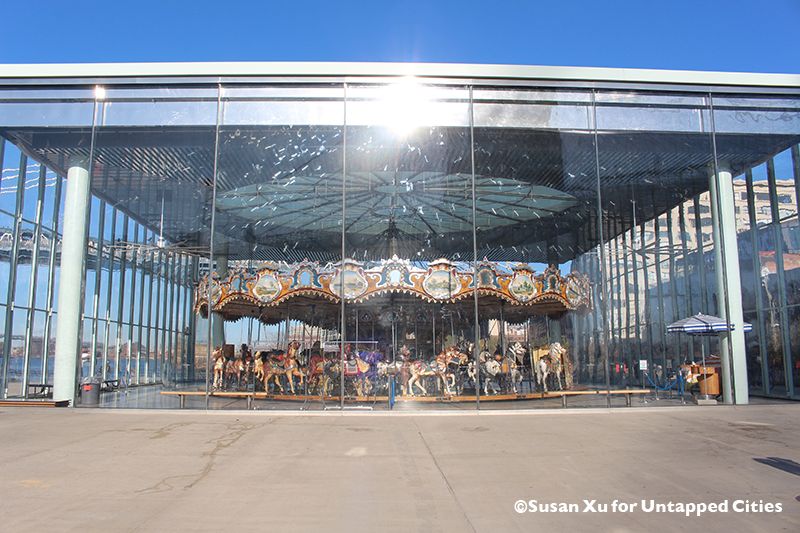
Before it was placed in Brooklyn Bridge Park, Jane’s Carousel, the beautiful wooden carousel featuring 48 carved horse and two chariots, was originally installed in Idora Park in Youngstown, Ohio. Created by the Philadelphia Toboggan Company (P.T.C.) in 1922, the carousel was purchased at an auction by Jane and David Walentas on October 21, 1984. David, who was the developer of the Empire Fulton Ferry State Park at the time, wanted to include a carousel in his Master Plan. Their successful bid for entire ride prevented it from being sold piece by piece.
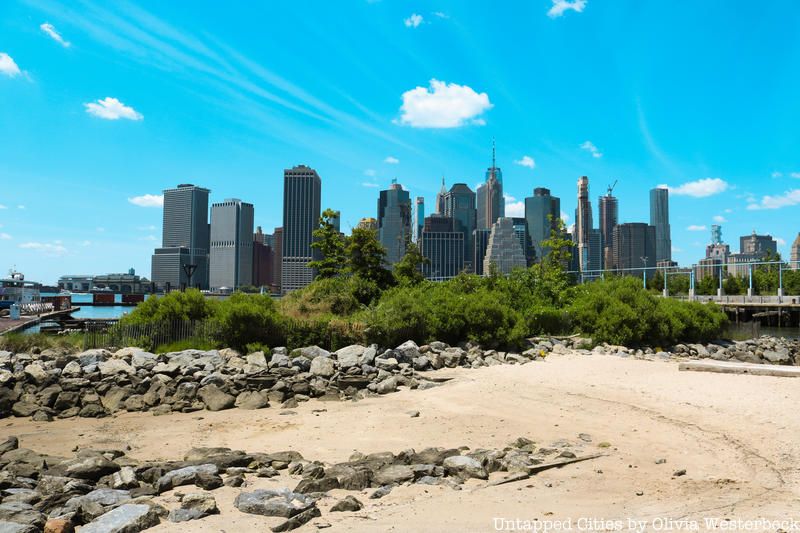
Although you cannot swim in the water at the beach in Pier 4, it’s still the perfect habitat for birds, marine animals and plant life. The man-made beach, built from the remnants of a railroad float transfer bridge, is filled with native plant species and designed to mimic natural tidal pools using structures from ECOncrete. Bird Island, an inaccessible nature preserve, is also located just offshore from the beach. It is home to a variety of salt-tolerant plants, including shrubs and trees, as well as an Osprey platform to draw large fishing birds to the area.
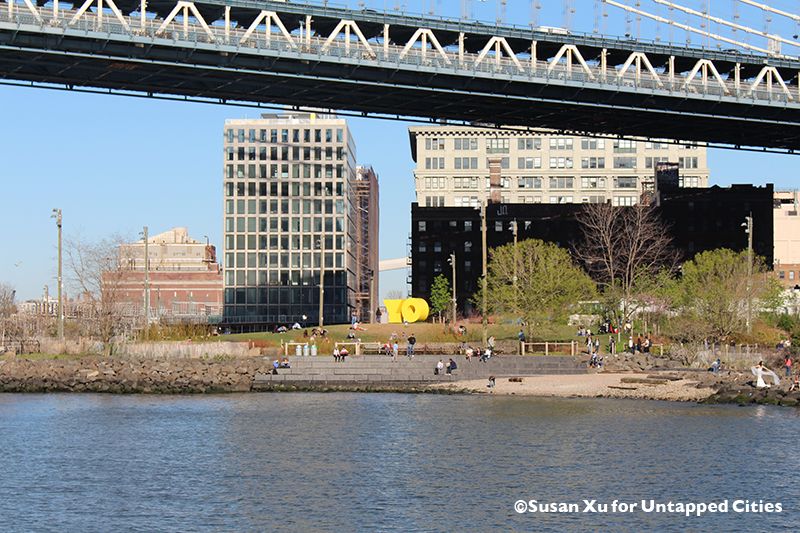
Although most waterfront parks are perched above the water, Brooklyn Bridge Park was designed to encourage interaction with the water through its diverse “edge types,” featuring beaches, salt marshes and ramps. Visitors can certainly take a stroll along the promenade, but they also have access to the shoreline at places like the sandy beach near Jane’s Carousel.
To learn more about the Brooklyn Bridge and cross its span, join us for an upcoming Secrets of the Brooklyn Bridge Walking Tour!
The Secrets of Brooklyn Bridge Walking Tour
Next, check out the Top 10 Secrets of the Brooklyn Bridge and see the impressive transformation of Brooklyn Bridge Park in photos. Keep up with the author @heysuehey.
Subscribe to our newsletter